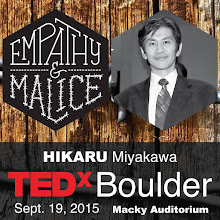Light is an interesting phenomena, entity, existence... whatever you might call it.
As an artist, it is almost inevitable that one encounters the mystery of light. The nature of light has been discussed and debated throughout the human history: through Empedocles, Euclid, Lucretius, Ptolemy, Leonardo da Vinci, Newton, Goethe, Farady, Einstein.... etc.
Without going into the deep metaphysical and / or scientific discussion, I can say that the artists tend to encounter and deal with the two forms of light: the natural light and the man made light.
The most powerful natural light is the sunlight. Although there is light by the moon, but it is the reflected light of the sun and not of its own. Light from the stars are too dim to be useful unless, for instance, you are painting or photographing them.
Within the realm of the man made lights, we most often use the tungsten family and the fluorescent family.... of course, there are others (i.e., the candle light). The tungsten lights tend to emit the warm yellow/orange light. The fluorescent lights tend to emit the bluish light.
The nice thing about these man made lights are that they can emit the light constantly and consistently as long as we allow it to happen (i.e., not turning off the light)
The sunlight, on the other hand, keeps 'moving.' I have had an interesting experience (and the realization )during my youth while I was trying to draw a rose under the sunlight. I remember having the difficult time trying to finish it. As I drew, the sun kept moving, and I've had to keep changing the 'shape' of the shadow, etc.
We do observe the nature and its beauty, but it was an eye opening experience for me to know that the natural light do keep changing. I could understand why the Impressionists had painted the way they did.
I use the natural light to take the portfolio pictures of my paintings. The sunlight between 11AM to1PM are the best light to take the picture, for light tend to be most white. Before 11AM, it is rather bluish, and after 1 PM, it can become rather orange like. Also, it is better to avoid shooting under the direct sunlight. I usually choose the cloudy day, so the light is diffused and saturated well.
I often think about the light at the gallery. Many galleries are using the tungsten based lights, so the entire image becomes warm. If you are used to painting under the fluorescent light, you can tell the differences right away.
As an artist, it is almost inevitable that one encounters the mystery of light. The nature of light has been discussed and debated throughout the human history: through Empedocles, Euclid, Lucretius, Ptolemy, Leonardo da Vinci, Newton, Goethe, Farady, Einstein.... etc.
Without going into the deep metaphysical and / or scientific discussion, I can say that the artists tend to encounter and deal with the two forms of light: the natural light and the man made light.
The most powerful natural light is the sunlight. Although there is light by the moon, but it is the reflected light of the sun and not of its own. Light from the stars are too dim to be useful unless, for instance, you are painting or photographing them.
Within the realm of the man made lights, we most often use the tungsten family and the fluorescent family.... of course, there are others (i.e., the candle light). The tungsten lights tend to emit the warm yellow/orange light. The fluorescent lights tend to emit the bluish light.
The nice thing about these man made lights are that they can emit the light constantly and consistently as long as we allow it to happen (i.e., not turning off the light)
The sunlight, on the other hand, keeps 'moving.' I have had an interesting experience (and the realization )during my youth while I was trying to draw a rose under the sunlight. I remember having the difficult time trying to finish it. As I drew, the sun kept moving, and I've had to keep changing the 'shape' of the shadow, etc.
We do observe the nature and its beauty, but it was an eye opening experience for me to know that the natural light do keep changing. I could understand why the Impressionists had painted the way they did.
I use the natural light to take the portfolio pictures of my paintings. The sunlight between 11AM to1PM are the best light to take the picture, for light tend to be most white. Before 11AM, it is rather bluish, and after 1 PM, it can become rather orange like. Also, it is better to avoid shooting under the direct sunlight. I usually choose the cloudy day, so the light is diffused and saturated well.
I often think about the light at the gallery. Many galleries are using the tungsten based lights, so the entire image becomes warm. If you are used to painting under the fluorescent light, you can tell the differences right away.


No comments:
Post a Comment